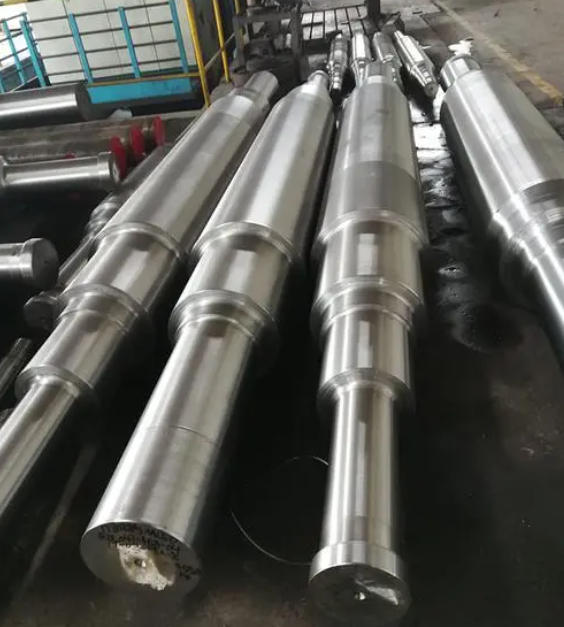Continuous moving heating is commonly used for induction heating of shaft forgings, while high-frequency quenching heating usually involves fixing the inductor while the forging moves. Medium frequency and power frequency heating, often moved by sensors, and the forging can also rotate when needed. The sensor is placed on the moving table of the quenching machine tool. There are two methods for induction heating of shaft forgings: fixed and continuous moving. The fixed heating method is limited by the power of the equipment. Sometimes, in order to heat forgings that exceed the power limit and require a certain depth of hardening layer, multiple repeated heating or preheating to 600 ℃ are used.
The continuous movement method refers to the process of heating and moving the inductor or forging, followed by cooling and quenching during movement. The fixed type refers to the heating and quenching surface of the forging in the inductor, where there is no relative movement between the inductor and the forging. After heating to the temperature, the forging is immediately cooled by spraying liquid or the entire forging is put into the cooling medium for quenching.
The heating method of shaft forgings plays a crucial role in industrial production. In addition to the continuous moving and fixed heating methods mentioned earlier, there are also other methods that can be used for heating shaft forgings. Below, we will introduce several common heating methods.
Flame heating: Flame heating is a common and traditional heating method. In this method, fuel, such as natural gas or liquefied petroleum gas, is used to generate a flame through a nozzle and transfer heat to the surface of the forging. Flame heating can provide relatively high temperatures and a larger heating area, suitable for various sizes of shaft forgings.
Resistance heating: Resistance heating uses the thermal effect of resistance generated when current passes through the material to heat the forging. Usually, the forging itself serves as a resistor, and current flows through the forging to generate heat. Resistance heating has the advantages of fast, uniform, and strong controllability, making it suitable for small and medium-sized shaft forgings.
Induction heating: The induction heating of shaft forgings has been mentioned earlier, which uses sensors to generate alternating electromagnetic fields on the surface of the forging, thereby heating the forging. Induction heating has the advantages of high efficiency, energy conservation, and fast heating speed, and is widely used in the production of large shaft forgings.
Laser heating: Laser heating is a high-precision heating method that directly irradiates the surface of forgings with a focused laser beam for heating. Laser heating has the characteristics of fast heating speed and high controllability of the heating area, making it suitable for complex shaped shaft forgings and processes that require high heating accuracy.
Each heating method has its applicable scope and characteristics, and it is very important to choose the appropriate heating method according to different needs and process requirements. In practical applications, the most suitable heating method is usually selected based on factors such as the size, material, heating temperature, production efficiency, etc. of the shaft forging to ensure that the ideal heat treatment effect is achieved during the heating process.
Post time: Oct-16-2023





